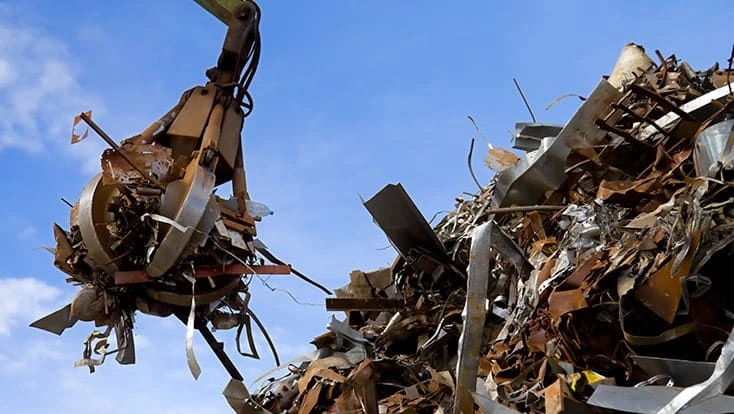
Image provided by Dreamstime.
The soaring ferrous scrap market portrayed by Fastmarkets AMM early January surveys has continued into the month, based on spot transaction pricing collected by Pittsburgh-based MSA Inc. for its Raw Material Data Aggregation Service (RMDAS).
RMDAS collects United States transaction pricing throughout the month that is accessible to its customers. It releases a 30-day snapshot on the 20th of each month. Its January index figures for spot pricing (covering Dec. 21, 2020 to Jan. 20, 2021) show mill buyers in the South paid an average of $502 per ton for prompt scrap, and in the RMDAS North Midwest region the price averaged $504 per ton.
National RMDAS averages for January showed a $70 spread between No. 1 heavy melting scrap (HMS), at $429 per ton, and prompt grades, at $499 per ton. Shredded scrap was positioned in between with a national average of $460 per ton.
Mill buyers looking for a bargain would have had to settle for the $415 per ton being paid for No. 1 HMS scrap in the South. The same grade averaged $440 in the North Midwest, which aggregates spot buying in Illinois, Iowa, Kansas, Minnesota, Missouri, Nebraska, North Dakota, South Dakota, Wisconsin and northwest Indiana.
Ferrous scrap values rose by from $80 to $111 per ton in January, depending on the grade and region, according to RMDAS. That follows jumps in the $75 to $85 per ton range during the RMDAS December buying period.
Traders and processors are not convinced the momentum will continue into February. Recent reports from traders indicate an absence of bulk purchases being booked by overseas buyers at U.S. ports. China, which buys little U.S. scrap but makes half the world’s steel in any given month, is preparing to go on low idle for the Feb. 12 Chinese New Year holiday, an annual event that typically causes ripples throughout the global supply chain.
On the supply side, higher scale prices have increased flows into many scrap yards in the U.S., bringing out inventory that some speculators may have been holding for several months.
A nonferrous wire and cable processor tells Recycling Today his inflow was notably reduced in December and early January. He suspects a lot of the smaller dealers who usually supply him with nonferrous material “were too busy moving scrap iron at these incredible levels.”
 | The Garden Center Conference & Expo, presented by Garden Center magazine, is the leading event where garden retailers come together to learn from each other, get inspired and move the industry forward. Be sure to register by April 17 to get the lowest rates for the 2025 show in Kansas City, Missouri, Aug. 5-7.
|
Latest from Recycling Today
- Call2Recycle Canada launches program in Alberta
- The history of SAS Forks: Celebrating 50 years
- SAS Forks partners with NED at Green Recycling in Houston, Texas
- DRKhorse’s RCC series at Gorick Construction in Endicott, New York
- Balar Equipment to operate under Enviro-Clean Equipment name
- Li-Cycle reports 2024 financials
- Wisconsin Aluminum Foundry acquires Anderson Global
- PureCycle, Landbell Group working to advance PP recycling in Europe







